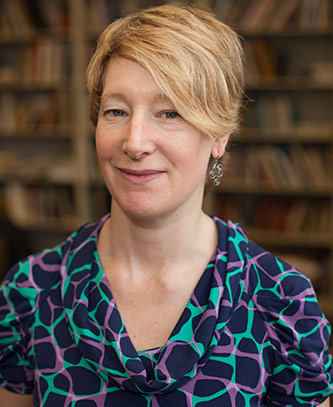Art Professor Receives Fellowship from the Metropolitan Museum of Art
Oct. 1, 2014

Jennifer L. Ball
It's estimated that during the 9th century some 10 percent of the population of the Byzantine Empire, which comprised much of Eastern Europe and the Middle East, joined a monastery. There are some loose theories as to why, but few academics have delved deeply into the reasons for the surge of interest.
Art Professor Jennifer L. Ball recently received the Andrew W. Mellon Fellowship from the Metropolitan Museum of Art for her forthcoming book, Habit Forming, which will be the first real scholarly attempt to explain the phenomena. The fellowship helps to supplement her salary while she is on sabbatical, and also allows her to work every day with other scholars at the country’s largest and most prestigious art museum.
"It’s super exciting to be there every day," says Ball, who is also a member of the doctoral faculty at the CUNY Graduate Center and teaches Byzantine, medieval, and Islamic art. "The library has absolutely everything you need, and most of the objects are easily accessible, as are the curators, who are genuinely excited to discuss your work with you. It helps to be constantly in conversation with other art historians."
Ball’s research for the project will also take her to Greece, Turkey, and Washington, DC, mostly to look at works of art depicting monks and nuns and some of the socio-political issues going on at the time. The art historian, who previously received a pre-doctoral fellowship from the Met, and who lectures there frequently, theorizes that among other things, the rise of Islam in culture and politics and a split from the Roman Catholic church inspired a renewed enthusiasm for the Christian Orthodoxy that was widely practiced in the Byzantine Empire. She hopes to have many of the bones of her book in place by the time she completes the fellowship next August.






